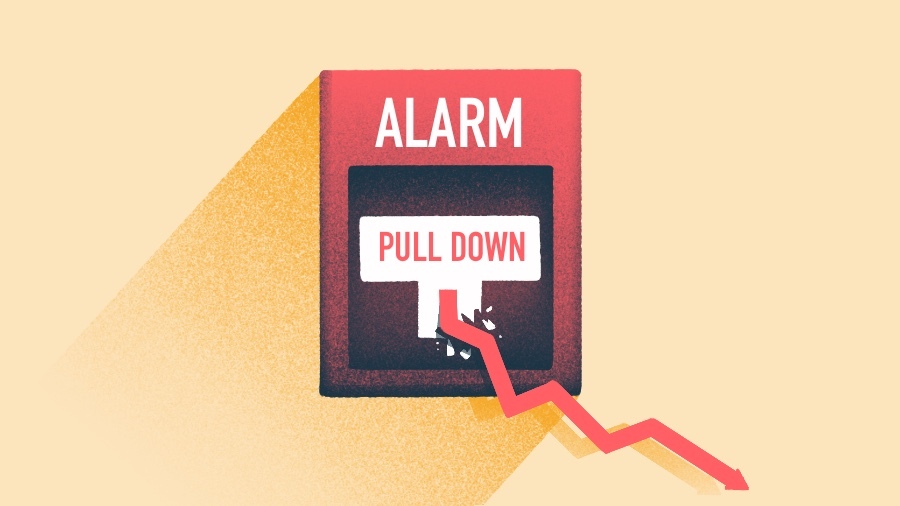Link to original article: A Secondary Investor’s Take On The Current, Still-Unnamed Downturn
Hans Swildens is convinced the tech and startup market downturn of the past few quarters is missing one crucial element: a name.
Twenty-three years ago, we had the Dot-Com Bubble. In 2008-2009, it was The Great Recession. But what do we call the steep reversal in valuations that followed the late-2021 market peak?
“The Unicorn Collapse?” proposes Swildens, whose firm, secondary-focused investor Industry Ventures, was active during both prior downturns. In the current, still unnamed market correction, the firm is busier than ever, closing on a record $1.7 billion-plus across two new funds last week.

Swildens later decides “unicorn collapse” is too negative a catchphrase. While valuations of heavily funded startups have receded sharply, most are still active, cutting burn and pushing for profitability. As an investor looking to acquire stakes in many such companies, the math only works if one sees upside from current levels.
I suggested the “Unicorn Reverse Stampede,” but then concluded that doesn’t work either. Mythical creatures capable of winged flight probably don’t stampede. Later, “The Big Crunch,” comes to mind — a concept in cosmology that is essentially the reverse of the Big Bang. Or perhaps simply “The Great Reversal.”
The great startup secondary sale
So far, the lack of a definitive name for the current cycle has not been a drag on deal flow. For venture secondary investors, who buy portfolios in venture capital funds or stakes in private companies, there’s virtually unprecedented demand from sellers.
“The venture market is a lot bigger than it was 10 years ago. So when you look at a portfolio from a large LP (limited partner), it’s a lot bigger than it was,” Swildens observed.
The cast of industry players looking to offload stakes is also quite wide. At Industry Ventures, deal flow sources include corporate investors, pension funds, endowments and hedge funds. Some VC funds are also seeking liquidity, as are shareholders in individual private companies.
Valuing private shares, however, isn’t as simple as looking at the last known valuation, or adjusting based on public market comps. For one, venture shares may come with attached rights, such as ratchet clauses and liquidation preferences, that make them more valuable than ordinary shares. Startups pioneering new technologies and business models, meanwhile, may have few relevant comparables for setting valuations.
A maturing market
For all the complications around valuing private company stakes, one development has made things easier: There are more players in the space.
Marketplaces for buying private company shares, including Nasdaq Private Market, Forge and EquityZen, have grown up over the past decade. For the more heavily traded private company shares, values aren’t always too different from what public markets might confer. Swildens points to the case of Instacart, which traded privately prior to its IPO and in some recent cases was actually valued a bit higher pre-IPO than it is now.
The broad pullback in most tech companies not named Apple, Nvidia or Microsoft over the past couple years, however, has made its way to late-stage portfolios. Selling stakes in later-stage startups are generally selling well below their peak 2021 valuations.
Early-stage companies, however, haven’t seen the same impact. For startups that raised their last round at seed, Series A or Series B, Swildens said, it’s common to see valuations remain at the price from their last round.
This time it’s not different
By many measures, the current downturn looks a lot like prior historic pullbacks, Swildens notes. We’re seeing valuation resets, companies adjusting business plans for leaner times, and a much weaker IPO market.
However, this time around there are a few differences. Extreme interest rate hikes in a short time span were a development few had foreseen. Geopolitical anxieties are also impacting decisions around holding stakes in foreign countries, presumably China in particular.
So, just as every downturn is different, every recovery plays out in its own way as well. For now, aside from a few enormous AI deals, the Great Correction isn’t showing signs of turning the corner to the next boom. When it does, secondary investors are angling to be holding the best cards in the house.
Illustration: Dom Guzman

